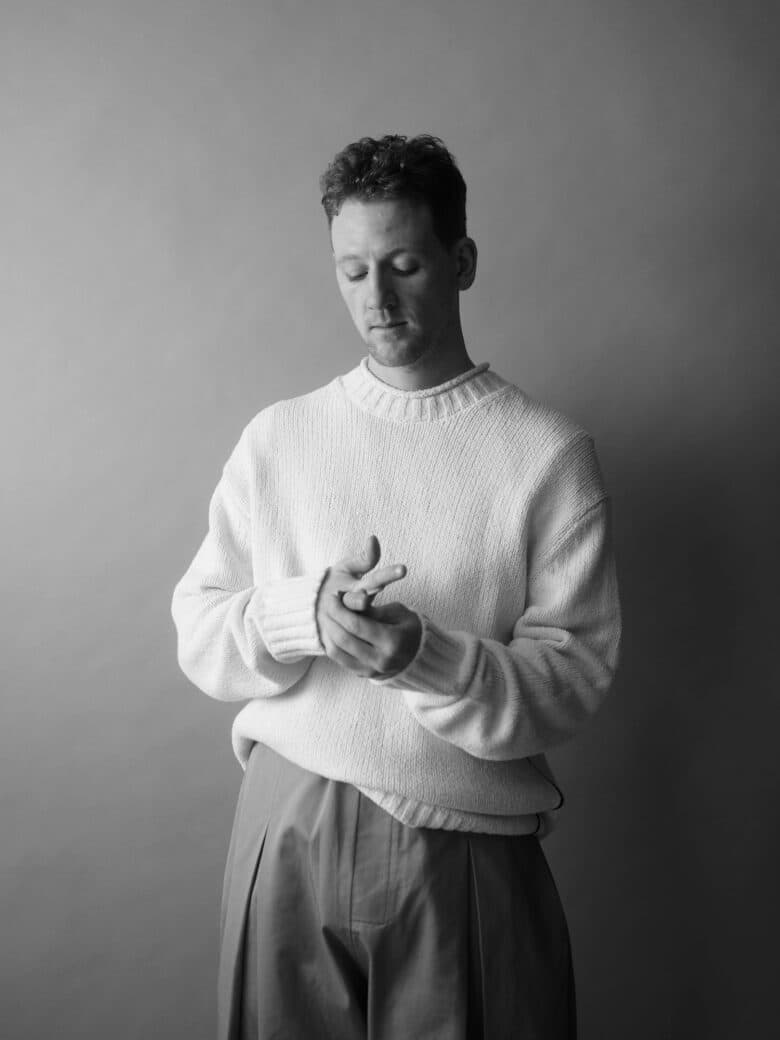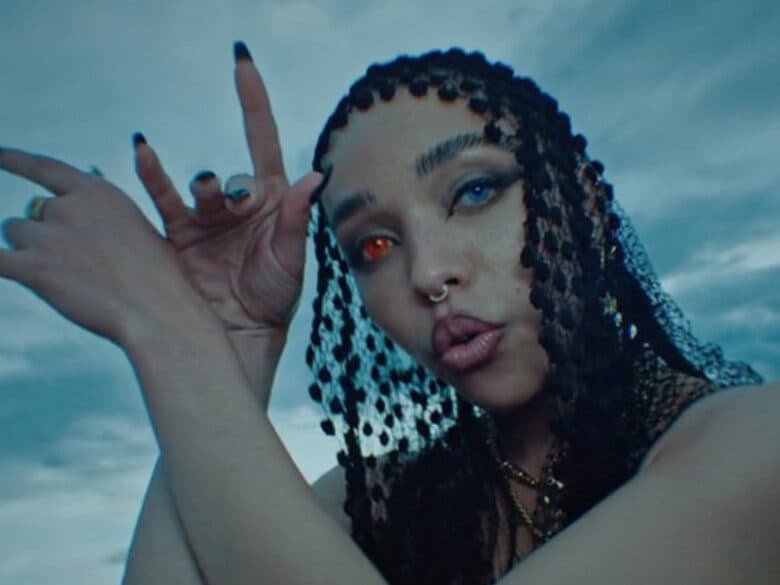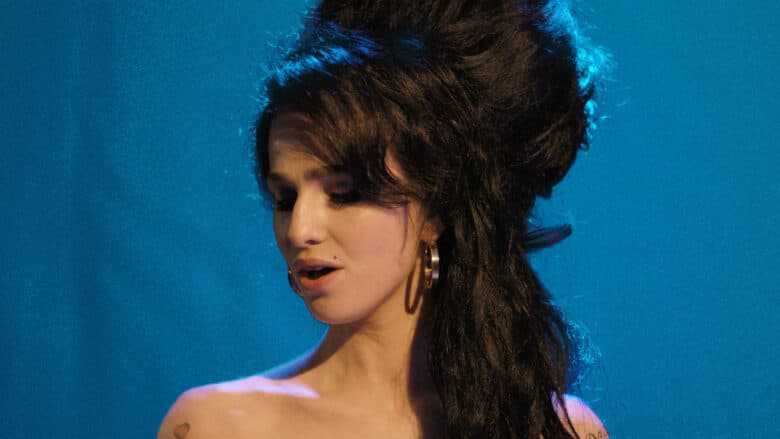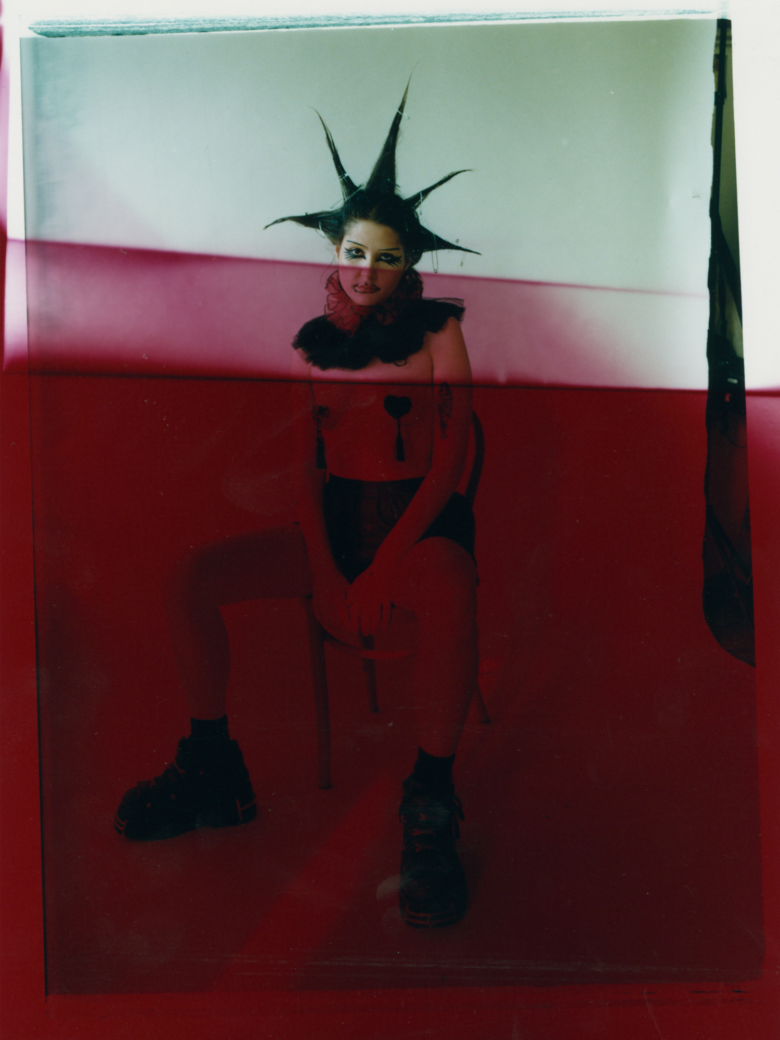How Kim Kardashian, Cardi B, Julia Fox and more went from D-list to A-list

On the day of the 2021 Met Gala, Kim Kardashian arrived masked in a black curtain-like Balenciaga ensemble, complete with a hood that covered her entire face. It was incredibly divisive – people took to social media to compare her to a sleep paralysis demon or a dementor, while others criticised her ability to stick to that year’s theme (In America: A Lexicon of Fashion). But one thing was indisputable: even though every single inch of Kardashian was covered, she was still the most recognisable person in the room.
Just 16 years prior, Kardashian couldn’t even have dreamt of such an occurrence. Back then she had come to our attention largely through a leaked sex tape and being Paris Hilton’s closet organiser. Her trajectory seemed obvious. She would be a quintessential D-list celebrity, who would land a role in a reality TV show and then, like every peripheral star before her, burn out to let someone new take on the mantle. But this couldn’t be further from, erm… reality. Less than 15 years later, Kardashian was helming the billion-dollar shapewear brand Skims, has been on the cover of US Vogue three times and opened for Saturday Night Live, while the Kardashians as a whole are arguably America’s most famous family.
With them and the proliferation of social media, the very notion of D-list and A-list celebrities has gone through a radical shift, paving the way for TikTokers and influencers like Addison Rae and Molly-Mae Hague to land film roles and become CEOs. This level of social-media-savvy and entrepreneurial chops is very different from what we expect from “traditional” celebrities, like movie stars, sportspeople and pop stars. Brad Pitt, Lady Gaga and Serena Williams are known for having tangible talent; their main goal isn’t to sell us a product, a lifestyle or a trend, instead they want us to engage with their work and buy tickets to their movies and shows.
So what gives? mj corey, who covers the Kardashian family through an academic lens via her Instagram account Kardashian Kolloquium, points out that this breed of celebrity are particularly adept at navigating social media and creating a consistent and recognisable tone of voice. Kardashian, she points out, excelled at joining platforms like Instagram and Twitter before they went mainstream. “We can all see that the Kardashians had a combination of luck, strategy and timing when it came to the media landscape and how it was evolving to become what it is now. It’s going to be hard to lose them now, because they drive media in a way where people will get more engagement and clicks if they create a meme or a headline focused on them. It’s a real flip of the script. Media needs them as much as they needed he media in the beginning, if not more.” But aside from their handling of the digital sphere, there were a number of other factors that facilitated the Kardashians’ ascent to celebrity royalty.
“The Kardashians are unprecedented in regards to their fame. I think they were able to do it because of their wealth, social standing, pre-existing fame – their father being OJ Simpson’s lawyer – and also being in the right place at the right time,” comments the writer, broadcaster, and reality TV aficionado Pandora Sykes. They opened up a space and fluidity within the celebrity sphere that didn’t exist a decade before, but as Sykes explains, it’s not open to just anyone. “I think you either have to have extraordinary wealth, charisma or a nose for fashion. For example, Christine Quinn is the only cast member to transcend Selling Sunset. [Other cast members like] Chrishell and Heather are pop-culture famous, but they aren’t walking the catwalk for Balenciaga. What Kim did, appearing in Vogue, despite [Anna] Wintour’s explicit distaste for reality stars, is fascinating, but there’s not necessarily a trickle-down effect. How many other reality stars can you name who went to the Met Gala?”
Still, a reality TV show, wealth and connections weren’t enough to legitimise Kardashian at the beginning of the 2010s. At that point, her PR wins at best included Dancing with the Stars, and she and her sisters Kourtney and Khloé were still working on the shop floor of their clothing boutique, Dash. That all changed when one of the most influential musical artists of all time, Kanye West, landed on the scene in 2011. “I believe that Kim’s trajectory to megastar and staying power is the result of her romantic relationship,” opines Natalie Franklin, the brains behind the hilariously satirical Instagram account Nori’s Black Book. “Specifically, it was her marriage to Kanye that was the turning point.”
The numbers don’t lie. At the end of 2014, the year she wed the Yeezy designer, Kardashian had 22 million followers on Instagram. By the following year, she had accumulated a further 22 million – something Franklin attributes to West’s influence. “Kanye is a global superstar and, by proxy, he made Kim a global superstar. Her relationship with Kanye opened those doors to Vogue. Her first of those covers was with Kanye, and the first time she attended the Met Ball was as Kanye’s plus one. He was also responsible for her fashion transformation, making her into a fashion icon,” Franklin continues – and who, indeed, could forget the episode of Keeping Up with the Kardashians when he chucks out all of her stilettos and bodycon dresses as she cries? “It might sound strange, but her marriage to Kanye allowed her to cross over from reality TV star to permanent A-list celebrity. It was huge!”
But then again, nothing is predictable. Just look at Lindsay Lohan, who continues to yo-yo between the A-list and D-list categories. Having started her career with 1998’s The Parent Trap, Lohan was within the tiny minority that crossed over from child star to teen idol. By the early Noughties, she had starred in Mean Girls, released platinum and gold-certified studio albums and was a fixture on the covers of both teenage and elite magazines. But by 2006 her career had taken a nosedive – in part due to her mental health and addiction issues, which the tabloids mercilessly documented. She stopped getting film work and only made headlines when she was being meme-ified for her dance moves and shape-shifting accent. Three years after that, in 2021, she featured in Interview magazine, under the headline “23 Years After The Parent Trap, Lindsay Lohan Still Has Class and You Don’t”. Such is the power of prestige media that it was the start of a slow but upward trajectory for Lohan. In March of this year, it was confirmed that she had signed a deal to star in three Netflix projects, and fittingly, outlets dubbed the news the “Lindsay Lohanaissance”.
Still, you can’t dispute the power of sheer talent and hard work, which when leveraged correctly, can carry you to the upper echelons. Prior to becoming one of the most recognisable artists in the world, Cardi B appeared in two series of the reality television show Love & Hip Hop: New York. The former stripper became its breakout star, before making the most of her new fanbase to pursue music full time, and she has never looked back. “Cardi B’s trajectory encapsulates everything that we’re talking about. In less than a decade she’s gone from internet celebrity to reality TV persona, then to rapper and a household name across music, fashion and publishing without watering down her personality or her politics,” says Garland, noting that the “WAP” singer made history when she became the first creative director of Playboy magazine last year. “She’s the definitive example of the collapsing of ‘high’ and ‘low’ culture – and the benefits of how much more fun and interesting culture can be when those artificial boundaries are collapsed.”
Post-divorce, Kardashian has continued to legitimise herself through other means. In interviews she almost always mentions her commitment to her four children, her prison-reform advocacy, which saw the release of inmate Alice Marie Johnson in 2018, and how hard she’s studying to become a lawyer. Her friendship circle has also expanded into more established and respected stars, including Amy Schumer, who helped her prep for her SNL skit, as well as Serena Williams and Madonna. So sure, getting in a high-profile relationship is a tried and tested way to attract publicity, but it doesn’t guarantee you’ll remain at the forefront of the public eye. Case in point? Julia Fox.
Before her highly publicised, short-lived fling with West at the beginning of this year, Fox was best known for her role in the Safdie Brothers’ Uncut Gems. But after six weeks of dating West and a Yeezy makeover, searches for her on Google increased by nearly 100 per cent. Only time will tell whether she has staying power, but Sykes is cynical: “Julia Fox is a talking point at the moment, but has all the coverage killed her career?” The cultural commentator Emma Garland agrees: “She’s an It girl cut from the cloth of Andy Warhol’s Factory, defined largely by her sartorial choices and the constellation of people that surround her. It’s an unstable breed of fame. She says something about this particular time and era, and part of her sensational appeal is that it feels like she isn’t supposed to be there – like at the Oscars when she talked with bloodshot eyes about her bag made of human hair. She’s one of the few underground sensations that crosses over into the A-list, but she’s not guaranteed a permanent place. It’s not the same as traditional celebrities who are rooted into place by industry repute and wealth respectively.”
There are comparable examples within the vast canon of celebrity culture. If we jet over to the UK’s premier influencer factory, Love Island, the only contestant that has truly managed to transcend being a social media personality is 23-year-old Hague. Within three years of appearing on the reality dating show, she has garnered more than six million followers on Instagram, become a multimillionaire and been named the creative director of the fast fashion giant PrettyLittleThing. She almost never mentions her time on the show and recently admitted that she used the opportunity to kickstart her career. There’s also The Real Housewives of New York City’s Bethenny Frankel, who used her popularity to promote her prepackaged alcoholic beverage brand, Skinnygirl, which she later sold for an estimated $100 million. Neither Hague nor Frankel are anywhere near being A-list celebrities, but you can see that they’re following a blueprint that was successfully executed by the Kardashians. It’s something that lets them ascend to be more than “just” reality TV stars, but it’s not enough to curry favour with prestige media and establish them as tastemakers or cultural icons in their own right.
Kardashian and her family are ultimately one in a million. Leverage social media, throw in some controversial outfits and a famous love interest, and you’ll probably get your 15 minutes of fame, but as we’ve seen, achieving A-list status takes a lot more than that. “Kim was able to do it, but I still don’t think her success will ever be duplicated, Franklin surmises. “I believe influencers and media personalities are in a lane of their own and should embrace it more. You won’t see Snooki from Jersey Shore on the cover of Harper’s Bazaar anytime soon, but that’s not her lane and that’s OK. There are levels to all of this celebrity stuff. Each level is relevant to some capacity. The levels provide balance. There is no A-list celebrity unless the D-list celebrity exists.”
This feature was taken from HUNGER 25: Celebrity




